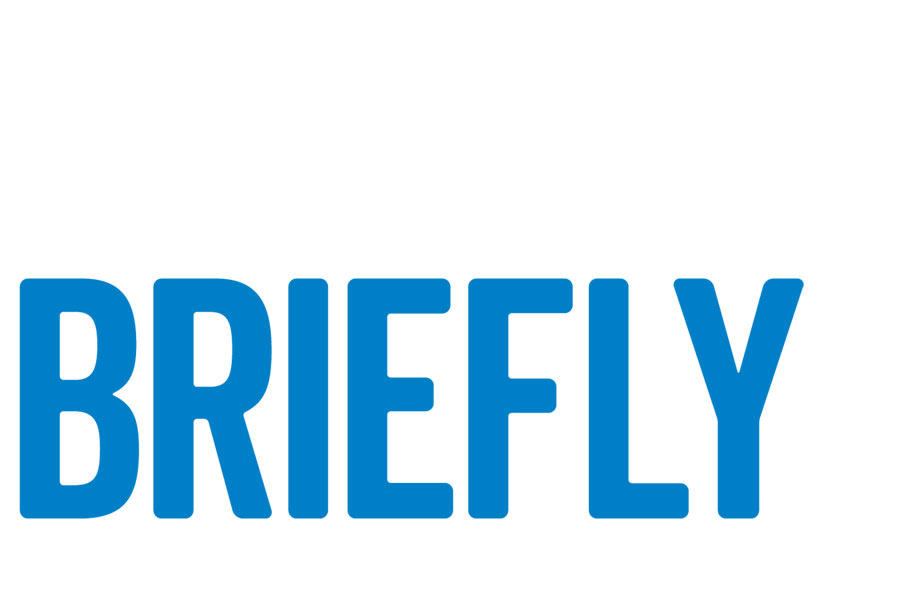

How to make a baby
Undetectable viral load makes having a baby safe.
In the latest battle over reproductive rights for people living with HIV, activists demanded that the CDC clarify the safety of conception between a man living with HIV and his HIV-negative female partner. The reality is that simply being undetectable on anti-HIV medication is enough for a man to prevent transmission to the woman.
Instead, the CDC in June issued guidance saying that sperm washing technology can now be used. This was an update from a 1990 CDC report in which sperm washing was not recommended.
Sperm washing, however, is a costly and burdensome way to make a baby when all you need to do is have sex—as long as the man is on HIV therapy and has undetectable viral load.
Under activist pressure, the agency published an erratum notice on August 18. The statement clarifies that HIV treatment alone can prevent transmission. Like the June guidance on conception for couples where the male is living with HIV and the woman isn’t, the August report pointed to perinatal guidelines from the National Institutes of Health (NIH), which recommend that men living with HIV who want to father a child should have undetectable viral load under HIV therapy before attempting conception. Also under activist pressure, the August notice goes further in adding data from three studies of thousands of mixed status couples having condomless sex. No HIV transmissions were found among uninfected partners when the HIV-positive partner had undetectable viral load while on antiretroviral therapy.
According to the erratum notice in Morbidity and Mortality Weekly Report (MMWR):
The risk for male-to-female sexual transmission of HIV in the absence of any prevention measures is estimated to be approximately 8 per 10,000 episodes of condomless intercourse.
Mixed HIV-status couples attempting conception can also reduce the risk for sexually transmitting HIV by decreasing the frequency of sexual contact and limiting condomless intercourse to the time of ovulation.
In addition, data is added that suggests a risk of 0.32% per 10,000 acts of condomless sex. There’s also discussion about HIV genetic material found in the semen of men with undetectable viral load (which may or may not be infectious). Also, the use of PrEP, intrauterine insemination, or in vitro fertilization, and any combination thereof, can be used to further reduce the risk of transmission. Unfortunately, the wording of the June MMWR guidance made it sound as if multiple prevention strategies are necessary, rather than just one.
The differences matter because many doctors are not knowledgeable about conception for people living with HIV. With misleading or incomplete information, providers might make patients go through unnecessary, and costly, hoops to achieve their dream of having a child.
Shannon Weber, MSW, director of the HIVE at the University of California San Francisco, told TheBodyPro.com that “the lack of information and clear guidance on TasP [treatment as prevention] and PrEP as stand-alone options” was disappointing, whether it was the male or the female partner who was living with HIV. HIVE is the nation’s leader in promoting reproductive rights for people living with HIV, including gay men.
JD Davids, Director of Partnerships for TheBody.com, said in a statement, “The vast majority of those on effective treatment have suppressed the virus, meaning they’re not at risk of sexual or perinatal transmission of HIV. And a daily pill of anti-HIV medication taken by HIV-negative people virtually eliminates their own HIV risk.
“We were, frankly, shocked and appalled to see a CDC guidance rife with outdated and misleading information that implied otherwise. Today, CDC has not only corrected these errors but released an updated analysis that shows respect for both the strength of the data and for people with HIV themselves.
“Now, they need to bring all their materials and activities into concordance with the simple truths of HIV today, which is preventable and treatable in ways unimaginable decades ago. People with HIV, and the public at large, desperately need this information, as stigma, misinformation, and discrimination remain abysmally high.”
Donations to support HIV Hurricane Relief Effort needed
In the wake of Hurricanes Harvey and Irma (and subsequently Maria), the HIV Hurricane Relief Effort was created to provide grants to support organizations serving the needs of people living with and affected by HIV in Florida, Louisiana, Texas, Puerto Rico, and the U.S. Virgin Islands.
AIDS United established the HIV Hurricane Relief Effort as part of the rapid response arm of the new Southern HIV Impact Fund, a collaborative effort coordinated by Funders Concerned About AIDS with generous support from Gilead Sciences, Ford Foundation, Elton John AIDS Foundation, and ViiV Healthcare. Gilead Sciences made an additional $1 million available to the Fund to support immediate assistance to areas affected by the storms, and Johnson & Johnson made a major contribution as well.
The demand for help will soon outstrip current available funds. Organizations, businesses, and individuals can make donations to the HIV Hurricane Relief effort at aidsunited.org/Donate/Donate-to-the-HIV-Hurricane-Relief-Effort.asp.
HIV nutrition advocate Lark Lands battling metastatic cancer
HIV activists and treatment advocates (including myself) have established a GoFundMe page for a longtime friend of the HIV community, Lark Lands.
Since the start of the epidemic, she has served people living with HIV by providing nutritional and supplement advice that’s helped keep them alive and healthy, when established medical providers couldn’t help with the symptoms patients were experiencing. When the people she helped couldn’t afford to pay for her consultation (which was the vast majority of the time), she simply provided her support for free.
Now Lands is battling metastatic cancer that has spread to her lungs, but has no financial means to pay for her therapy or medical equipment, such as a portable oxygen machine that would make a huge difference in her ability to get around. She would need it to get on a plane for a cancer study found by fellow activists.
“Lark is a very private person who was reluctant to allow us to establish this GoFundMe page, soliciting funds for her,” the group writes. “But we argued that she had given the HIV community so much for so many years that she needed to now let us do something for her.
“And Lark needs our help. Most of what Lark did working with people living with HIV and with the AIDS orphans project she cofounded in South Africa was done on her own, without a salary and largely uncompensated through much of 30 years. As a result she has no savings or retirement fund or investments to cash in. She still works as a medical editor, basically living hand-to-mouth every month. Thus, she doesn’t have the financial resources to deal with what she is facing.”
Go to gofundme.com/helplarklands. See also an article by Nelson Vergel on TheBody: thebody.com/content/80338/please-help-lark-lands-an-old-friend-of-the-hiv-co.html.
Criminalization reform passes in California
Knowingly exposing a sex partner to HIV will no longer be a felony in the state of California. Governor Jerry Brown has signed a reform bill into law that reduces it to a misdemeanor.
Senate Bill 239 amends a decades-old law, reducing prison time from up to eight months to no more than six months if convicted, the same penalty for intentionally transmitting any other disease.
“HIV should be treated like all other serious infectious diseases, and that’s what SB-239 does,” said state senator Scott Wiener (D-San Francisco), co-author of the bill. “We are going to end new HIV infections, and we will do so not by threatening people with state prison time, but rather by getting people to test and providing them access to care.”
Supporters of the reform charged that the old law criminalized HIV, creating an atmosphere of fear and distrust that discouraged people from getting tested. HIV was the only communicable disease for which intentional exposure was a felony under California law.
“The passage of SB-239 marks tremendous progress for Californians living with HIV. Laws that criminalize HIV positive status are not based on science—they are based solely on hysteria and fear—and essentially create an underclass of people diagnosed with a disease, placing us at risk for discrimination and even violence,” said Naina Khanna, executive director of Positive Women’s Network (PWN-USA).
The reform bill goes into effect January 1, 2018. It will also apply to people living with HIV who donate blood without informing the blood bank of their status.
—RICK GUASCO
Everyone living with HIV should be checked for pain
New guidelines recommend screening everyone living with HIV for pain. The guidelines were released in September by the HIV Medicine Association (HIVMA) of the Infectious Diseases Society of America (IDSA). Patients should be asked how much bodily pain they have experienced in the past week or if they’ve had bodily pain that has lasted more than three months. A list of resources for physicians is provided. The guidelines state that opioids should not be used as a first-line treatment. Instead, physicians should turn to a multidisciplinary approach using non-drug options ranging from yoga to physical therapy.
HIVMA PAIN GUIDELINES AT A GLANCE
All people living with HIV should be screened for chronic pain, which affects 39 to 85% of people with HIV.
Those who have chronic pain should be treated using a multi-disciplinary approach focused on non-drug options ranging from yoga to physical therapy, note the guidelines. Opioids should never be a first-line treatment.
Almost half of all chronic pain in people with HIV is neuropathic (nerve) pain, which researchers believe is due to inflammation caused by the infection of the central or peripheral nervous system. Non-neuropathic pain typically is musculoskeletal, such as low-back pain and osteoarthritis in the joints.
Aetna lawsuit over privacy violation
The AIDS Law Project of Pennsylvania, along with the Legal Action Center (New York City) and the Philadelphia law firm of Berger & Montague, filed a federal class action lawsuit against the insurance company Aetna for sending patients letters in which information on HIV medications was clearly visible through a large clear window on the envelope. They first issued a cease-and-desist letter to the insurer to prevent more letters from being mailed.
Ironically, the 52-year-old man listed as the lead plaintiff does not have HIV, but is taking an HIV medication to prevent infection (a strategy called PrEP). Nevertheless, clearly visible through the envelope is information about obtaining HIV medications. His sister, who lives with him, learned he was taking an HIV medication because of the breach of confidentiality.
The letter was sent to 12,000 customers in at least 23 states.
“For 40 years, HIV-related public health messages have been geared toward assuring people that it’s safe to come forward to get confidential HIV treatment, and now our clients come forward for HIV-related healthcare and Aetna fails to provide confidentiality,” said Ronda B. Goldfein, executive director the AIDS Law Project of Pennsylvania, in a press release.
Goldfein told TheBody.com that family members, roommates, and neighbors have learned of people’s HIV-positive status as a result of the letters.
According to the media release, one Florida couple has already moved from their home because of embarrassment over their invasion of privacy. Other people are being shunned. “After four decades, HIV and AIDS still cause stigma, leading to discrimination in employment, housing, education, and health care, and even violence,” the report notes.
Those affected by the privacy breach can contact the project at 215-587-9377 or find more information at aidslawpa.org.
Hep C medication Olysio to be discontinued?
Janssen Sciences pharmaceutical company announced that it will not pursue development of its investigational hepatitis C treatment JNJ-4178. As such, it is withdrawing from the hep C treatment field. In a press release, Janssen reported that, “This decision was made in light of the increasing availability of a number of highly effective therapies addressing the medical need in hepatitis C.” Instead, the company will focus on therapy for hepatitis B, “where a high unmet medical need still exists.” Hep C treatment advocates expect that the company’s hep C medication Olysio (simeprevir) will be discontinued.
‘Recovery Rising’
My favorite blogger, William L. White, has a new book out, Recovery Rising: A Retrospective of Addiction Treatment and Recovery Advocacy. “I have worked in the arenas of addiction treatment, recovery research, and recovery advocacy for nearly half a century and been blessed with opportunities to work with some of the leading policy makers, research scientists, clinicians, and recovery advocates of my generation,” White said in his blog. “At this late stage of my life, it seemed a worthy effort to try to pass on some of the hard-earned lessons I have drawn from this work. Such was the inspiration for turning decades of professional journaling into a book of stories that highlight, through my own experiences, some of the major milestones in the modern history of addiction treatment and recovery.” A portion of the proceeds from each book will be donated to grassroots recovery advocacy. Ask your local independent bookstore to order a copy for you. Other books by White include Slaying the Dragon and Pathways from the Culture of Addiction to the Culture of Recovery. His earlier book, The Culture of Addiction and the Culture of Recovery, was instrumental in my understanding of addiction.
Descovy in pediatrics
The Descovy (FTC/TAF) package insert was updated to include 24 week data in children. “Use of Descovy in pediatric patients weighing at least 25 kg [55 pounds] is supported by adequate and well-controlled studies of [Genvoya] in adults [and by a study of children ages 6 to less than 12 who weighed at least 25 kg].” Descovy can now be used in that population. Previously, it was approved for use in patients age 12 and up weighing at least 35 kg (77 pounds).
Norvir oral solution
The package insert for Norvir oral solution was updated in October to include feeding tube information. “Because Norvir oral solution contains ethanol and propylene glycol,” the FDA reported in a press release, “it is not recommended for use with polyurethane feeding tubes due to potential incompatibility. Feeding tubes that are compatible with ethanol and propylene glycol, such as silicone and polyvinyl chloride (PVC) feeding tubes, can be used for administration of Norvir oral solution. Follow instructions for use of the feeding tube to administer the medicine.”
CDC: Undetectable means effectively no transmission risk
The CDC issued its strongest statement to date on the lack of HIV transmission when people living with the virus have undetectable viral load. For National Gay Men’s HIV/AIDS Awareness Day, on September 27, the CDC said that “people who take ART [HIV therapy] daily as prescribed and achieve and maintain an undetectable viral load have effectively no risk of sexually transmitting the virus to an HIV-negative partner.” This means you too, straight boys and bi boys.
HIV research in the era of PrEP
Treatment Action Group (TAG) reported that, “The effectiveness of pre-exposure prophylaxis (PrEP) with the antiretroviral drug combination TDF/FTC (Truvada) raises questions regarding the design and conduct of trials of other candidate biomedical HIV prevention interventions, such as vaccines, passive immunization and alternative forms of PrEP.” Read the group’s white paper on this topic at treatmentactiongroup.org.
Nurse assaulted by police who protected a patient
An internal affairs investigation found that two Salt Lake City police officers violated guidelines on arrests, ethics, and officer conduct, and other rules, when arresting a hospital nurse for refusing to take a blood sample from an unconscious patient. As both she and a hospital supervisor had explained, such an action was against hospital procedure, as well as state and federal law. A blood draw was not allowed without a patient’s consent unless there was a warrant or an arrest. According to reports, the patient had been struck by a vehicle driven by someone fleeing from the police.
Detective Jeff Payne and Lt. James Tracy were put on administrative leave. Payne also lost his part-time job as a paramedic. The FBI announced that it was looking into whether Payne violated federal laws. The State of Utah is also investigating.
In a press release from National Nurses United, co-president Jean Ross, RN, said, “The first job of a registered nurse is always to protect and advocate for her patient, period. As the videos and news accounts make clear, there is no excuse for this assault, or her arrest, which sends a chilling message about the safety of nurses and the rights of patients.” The association announced that it was sponsoring a campaign to help stop “the growing epidemic of hospital workplace violence.”



